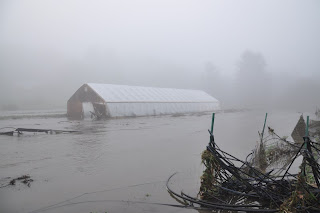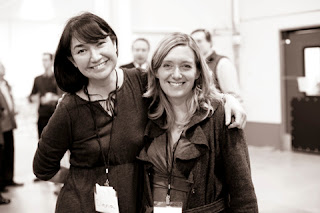The Vermont Farm Fund Launches New Innovative
Loan Program
Getting back to their roots, VFF refocuses on moving local food
system forward
Hardwick,
VT, May 31, 2012— On June 1st, the Center for an Agricultural Economy and Pete’s
Greens will launch the Vermont Farm Fund Innovative Loan. Offering a low
interest rate and quick response, the Innovative Loan Program will benefit farmers and
food producers who are “innovating” to increase the diversity of local foods
produced in Vermont.
Examples of innovation include development of a new crop, product, process or
market; business and/or financial planning for diversifying product lines; new
kinds of infrastructure and equipment that would increase the amount of local
food or local ingredients in a commonly used product. Like the Vermont Farm Fund (VFF) Emergency
Loan Program, the VFF Innovative Loan Program will be a simple application process for $10,000
loans payable over the course of 24 months with a low interest rate.
Although
in the planning stages since early 2011, the Vermont Farm Fund Advisory Board
halted planning for the Innovative Loan in August 2011 and quickly established the emergency loan
program to meet the immediate needs of farmers effected by the catastrophic
flooding from Tropical Storm Irene. This zero interest revolving loan program of $5,000 and $10,000 loans has been
highly successful, resulting in over $100,000 in loans to a dozen farmers in
Vermont. “We are very pleased with the progress we are making” says Mary
Skovsted of Joe’s Brook Farm in St. Johnsbury. “It has been a very good spring
for growing and the Emergency Loan has put us in a position to take advantage
of the good weather. Our hope is that by the end of 2012 the flood will
be a distant memory.”
The
Vermont Farm Fund (VFF), created by Pete’s Greens in Craftsbury, VT in
partnership with the Center for an Agricultural Economy (CAE), was inspired by
the outpouring of support Pete's Greens received when the farm's barn and
processing facility, burned to the ground in January 2011. The VFF is guided by a
group of independent advisors of farmers and community leaders.
To
make a tax deductible donation, please visit
hardwickagriculture.org/donate.html or write a check to the Vermont Farm Fund
and mail to the Center for an Agricultural Economy, PO Box 451, 21 Mill Street,
Hardwick, VT 05843.
 |
| Joe's Brook Farm, St. Johnsbury, Vermont |
 |
| Better days are here |









